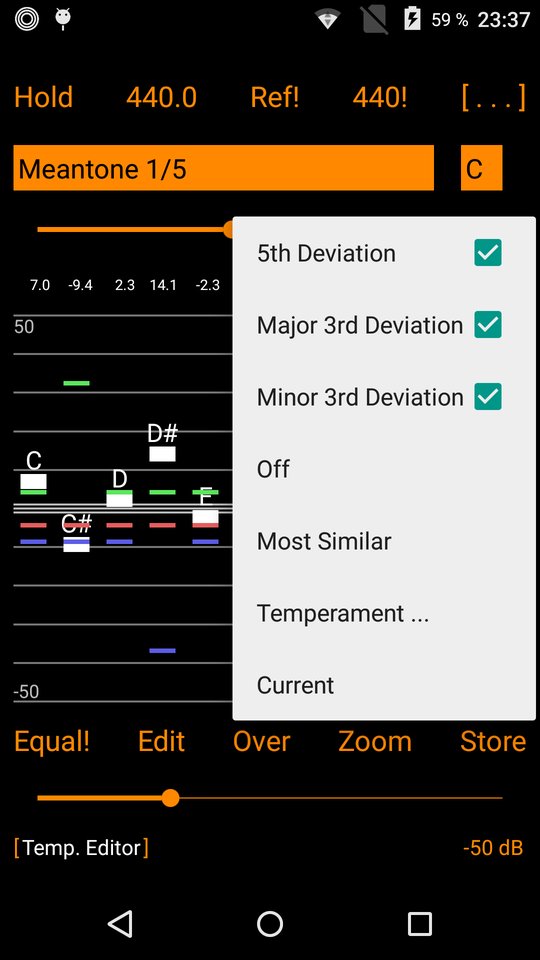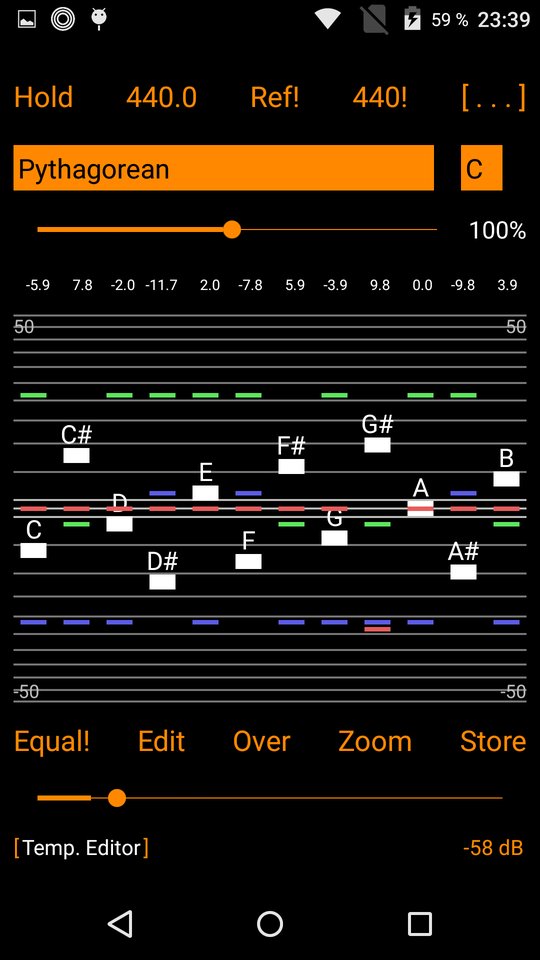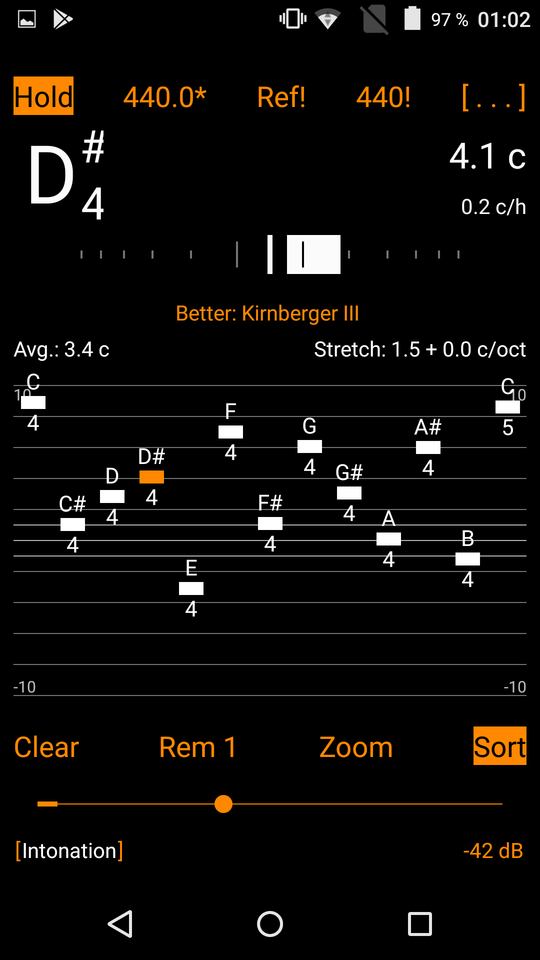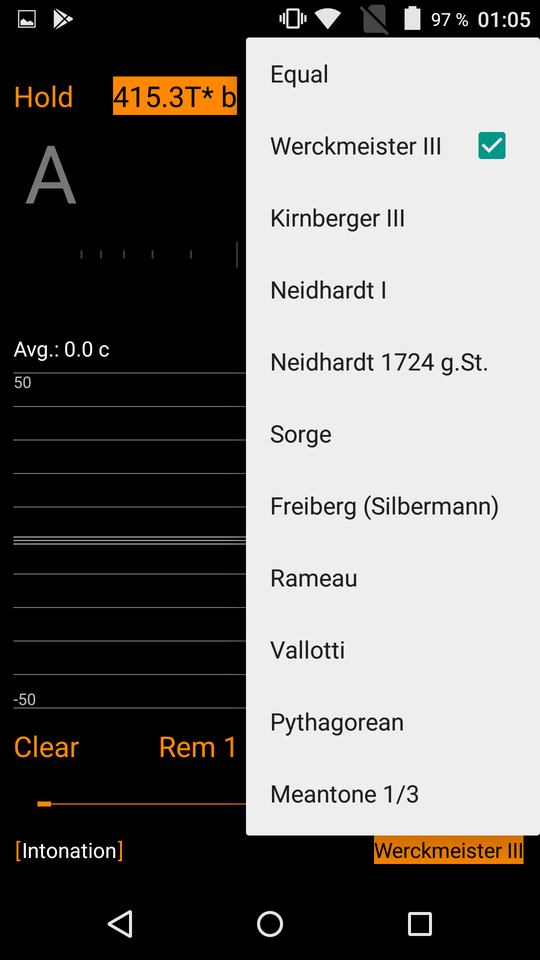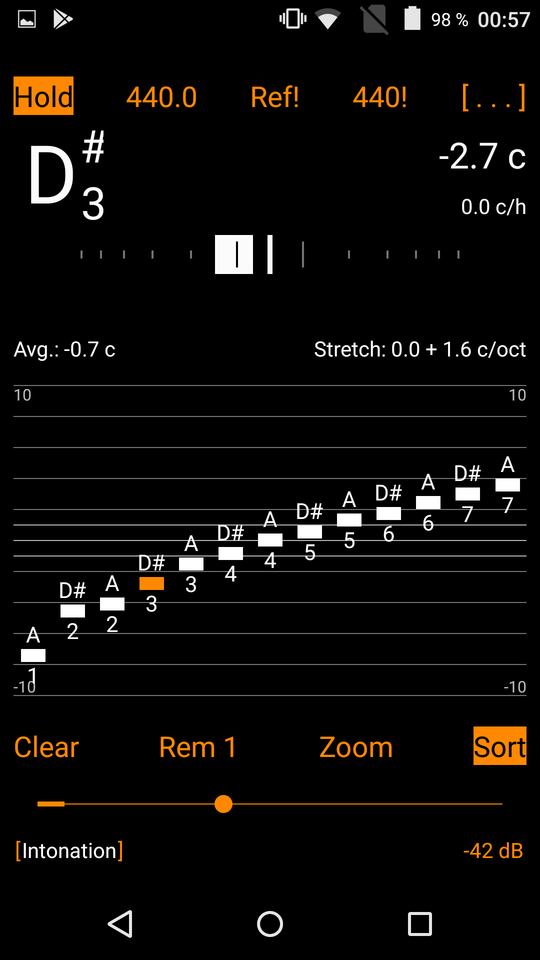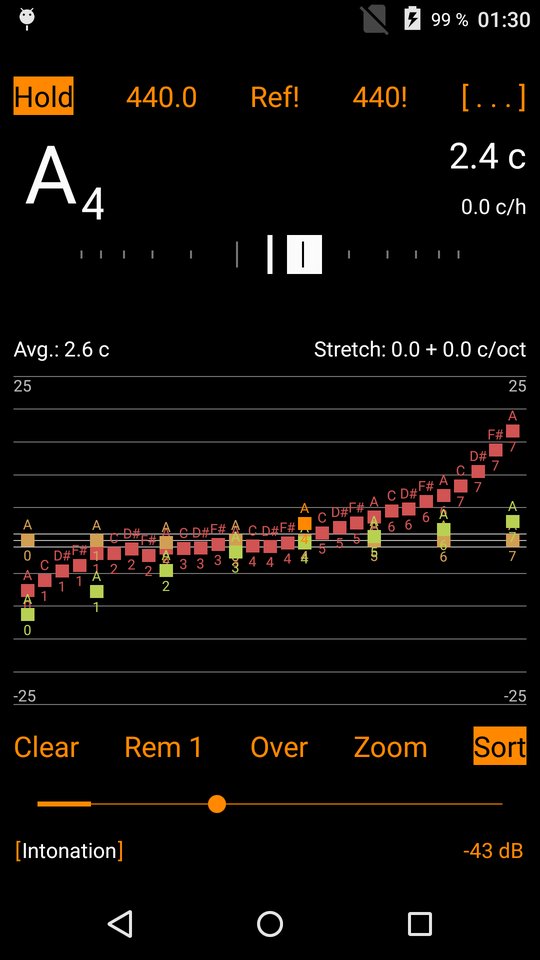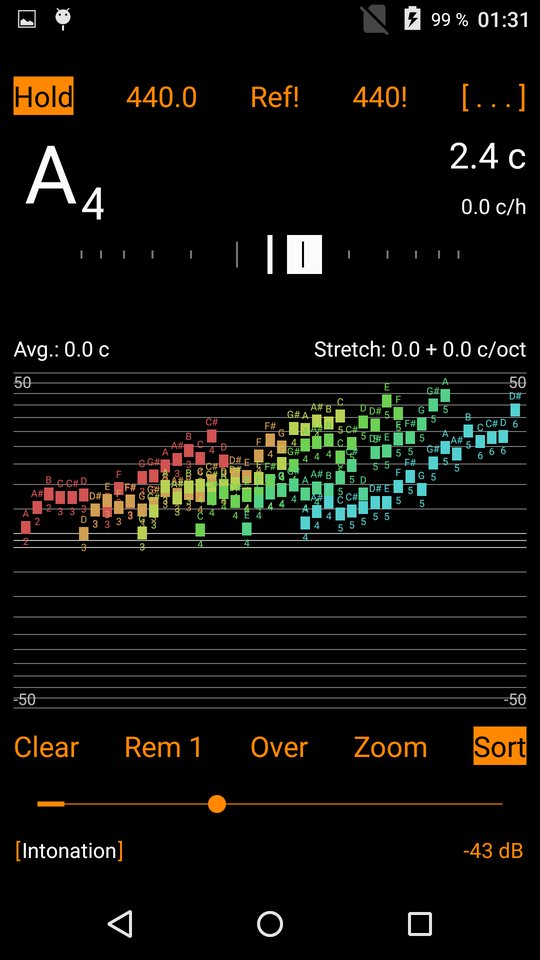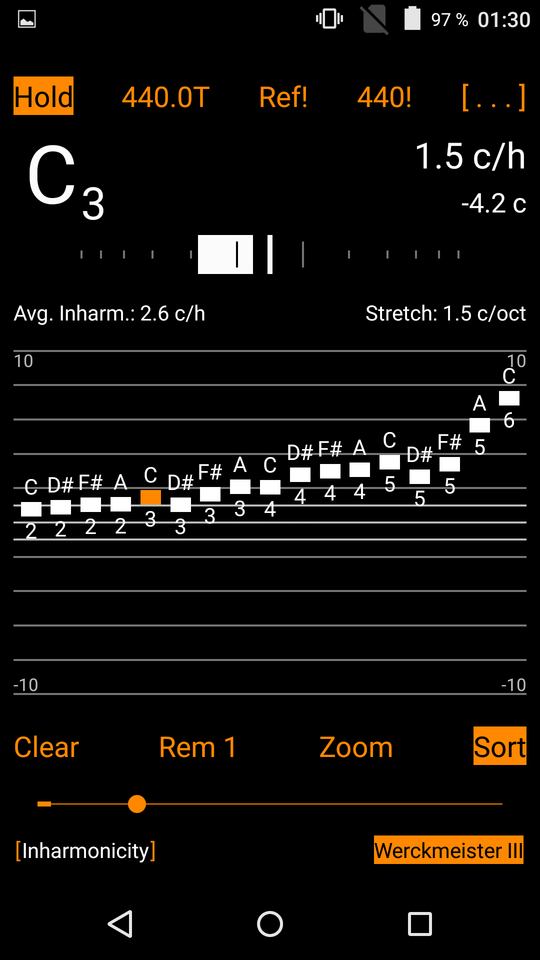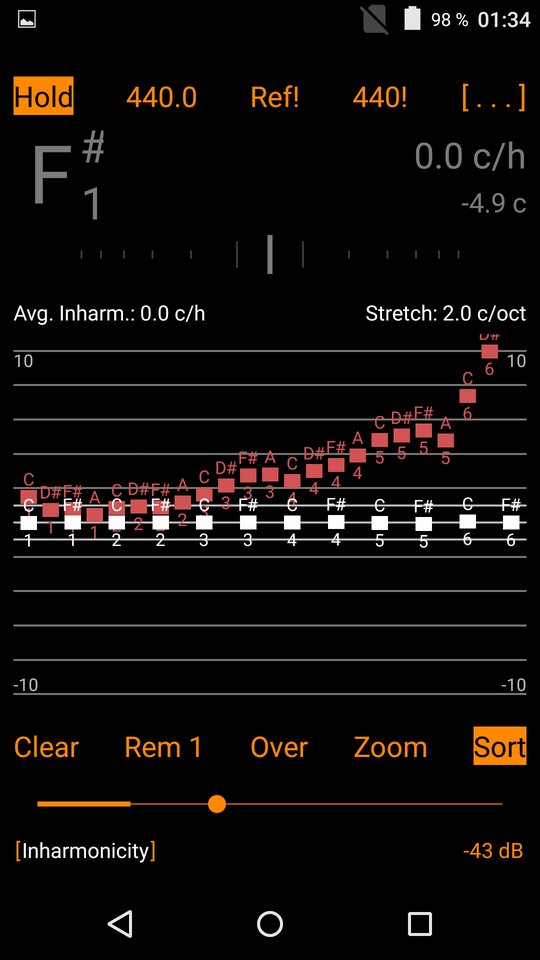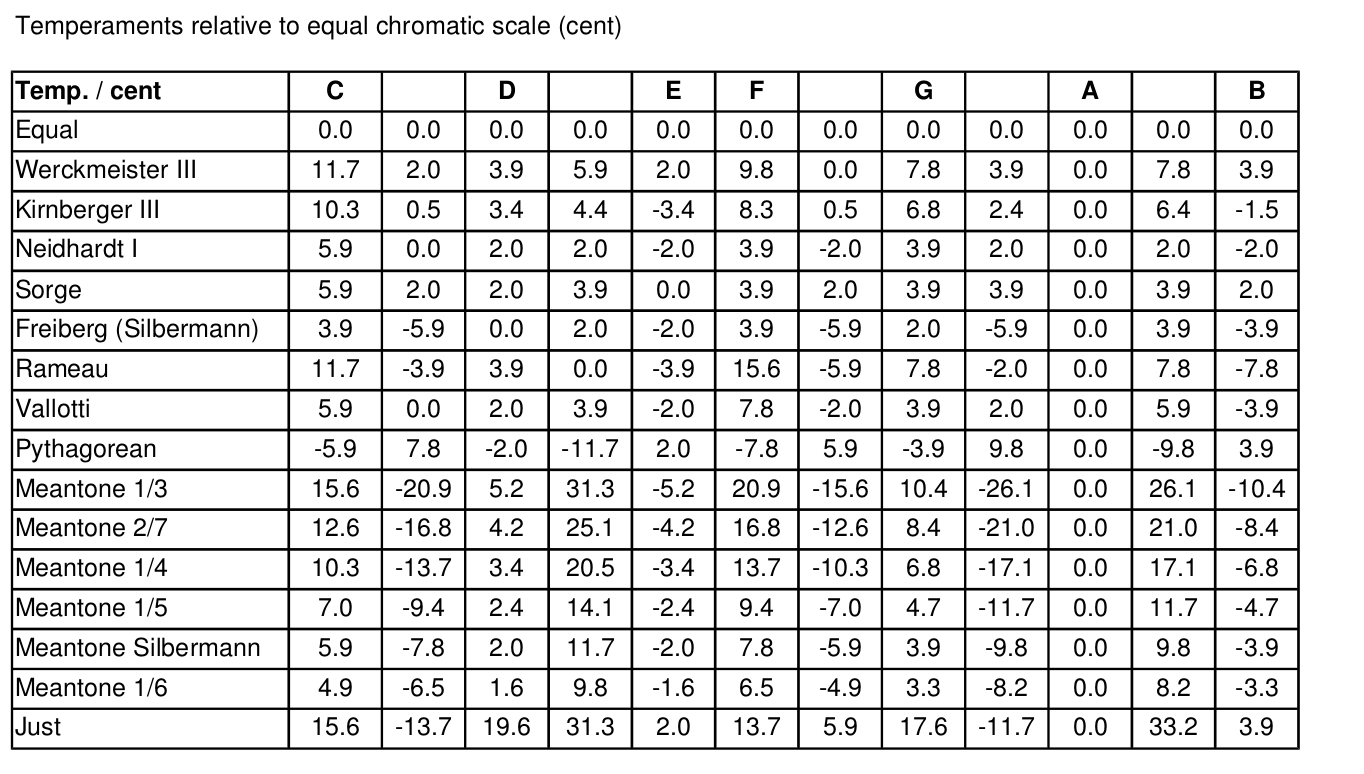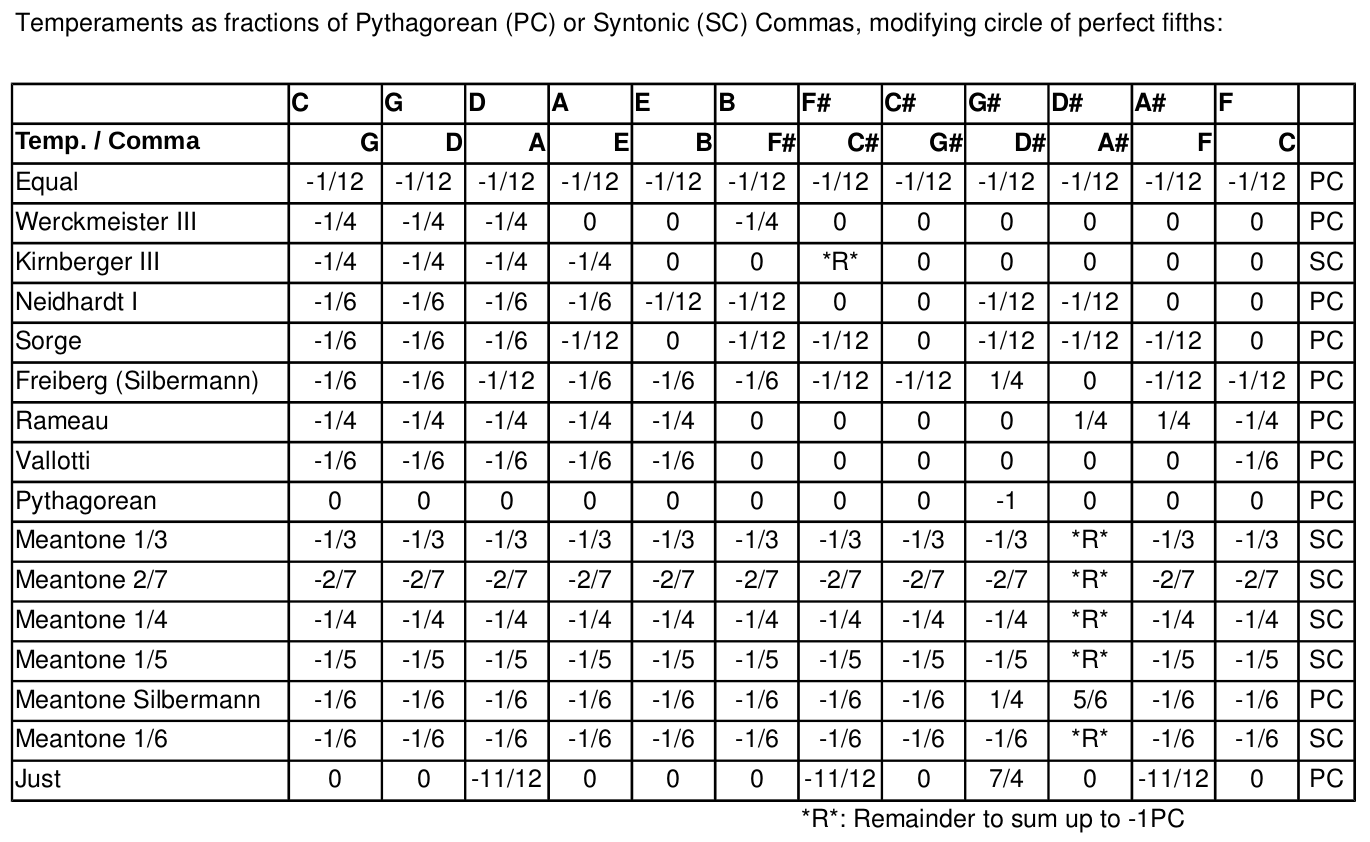String Inharmonicity on an Electric Guitar
This Harmonic Tuner Intonation Expert app measurement shows, how inharmonicity varies from string to string and increases on upper frets of a Fender-scaled electric guitar (0.010-0.046 strings).

Inharmonicity on plucked or hammered strings is a consequence of string stiffness an leads to widened intervals between a note’s harmonics – compared to the perfect intervals formed by theoretically exact harmonic overtone series (as achieved by bowed strings or blown instruments). Harmonic Tuner’s metric of inharmonicity is Cent per harmonic (c/h) and expresses, by how many cent harmonics are tuned too high compared to the next lower harmonics. See Harmonic Tuner’s special bargraph view of harmonic’s individual tuning below – the example shows the note A (440 Hz) played on a stringed instrument resulting in a significant inharmonicity metric of 4.3 c/h.
To make intervals sound consonant on instruments with hammered/plucked strings like pianos, stretch tunings are applied. They widen intervals between fundamental frequencies to get a better match of harmonic’s frequencies. Harmonic Tuner Intonation Expert allows for widening tunings in the range of 0 to 5 cent per octave. Use the inharmonicity protocol as shown above to quickly measure, what’s the inharmonicity of your instrument’s strings and find a matching stretch value.
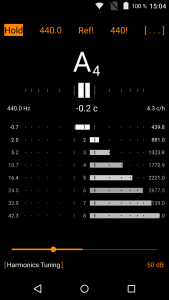
See the Harmonic Tuner Guitar Setup example video clip to see how to combine inharmonicity measurement with stretch tuning and intonation setup in Harmonic Tuner Intonation Expert to get an optimal guitar setup.

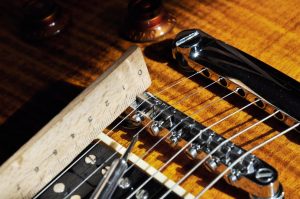
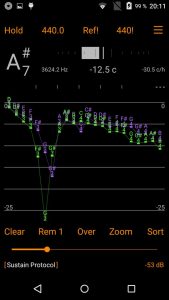
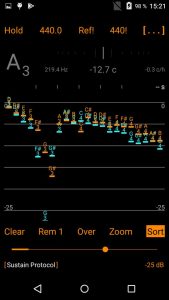
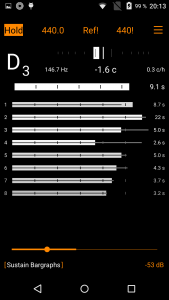
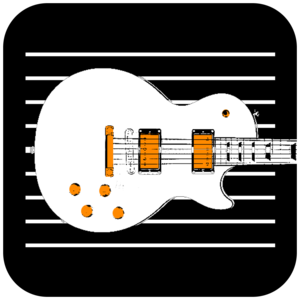
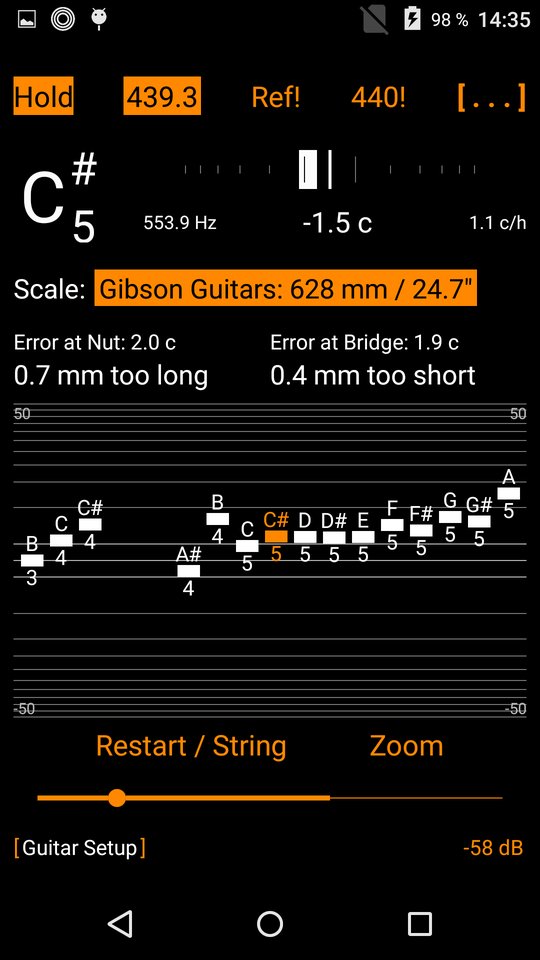
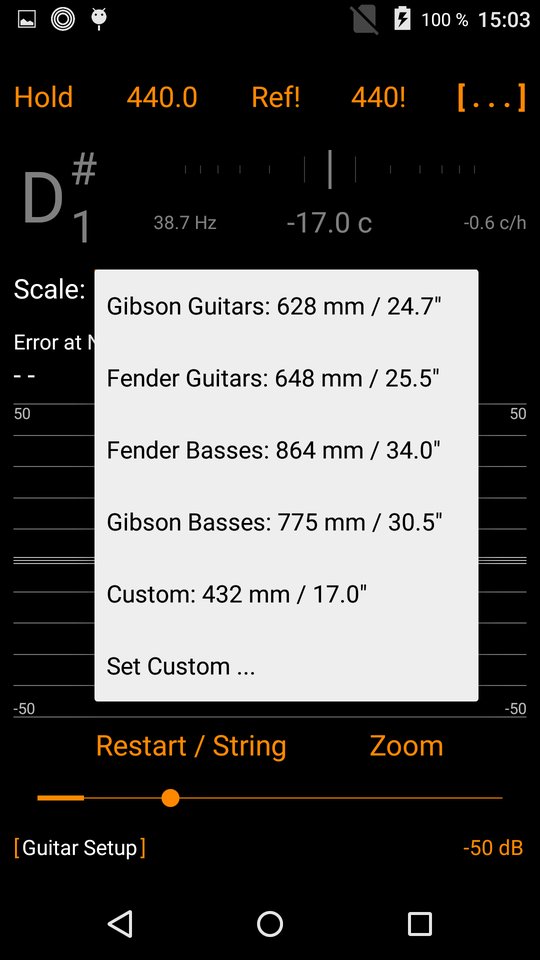

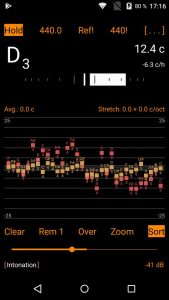

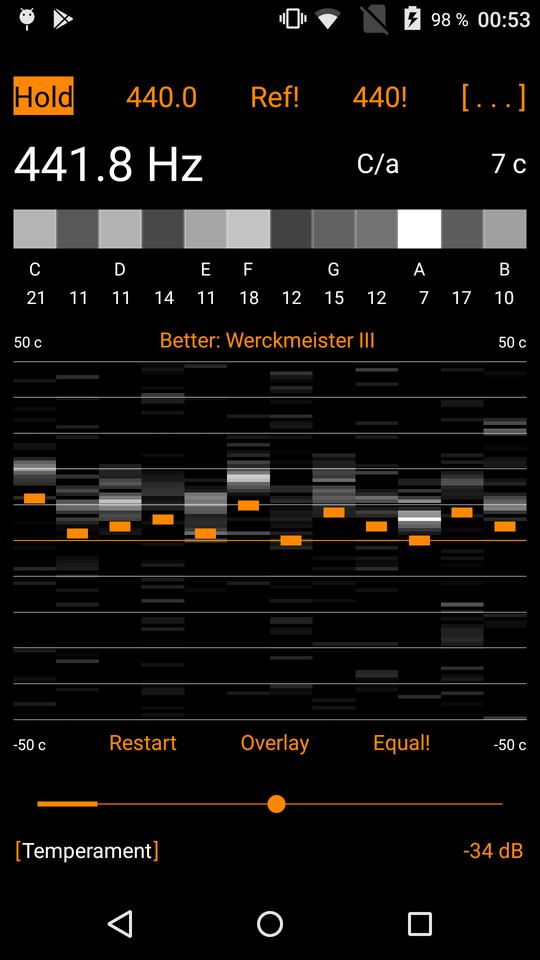
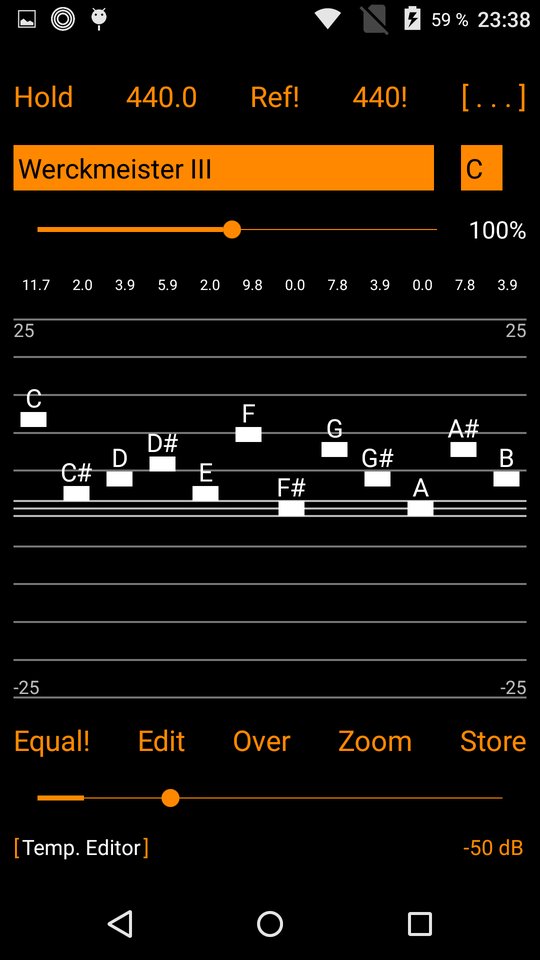

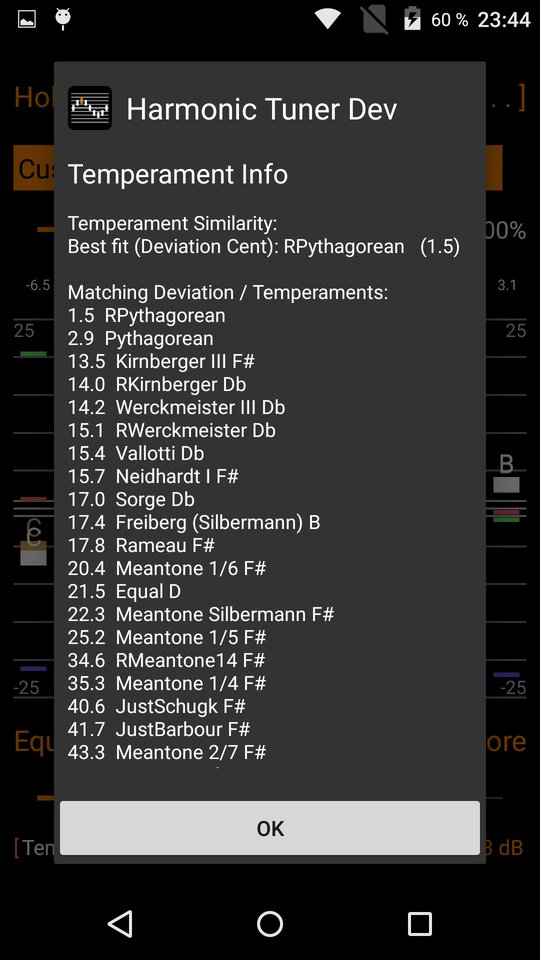
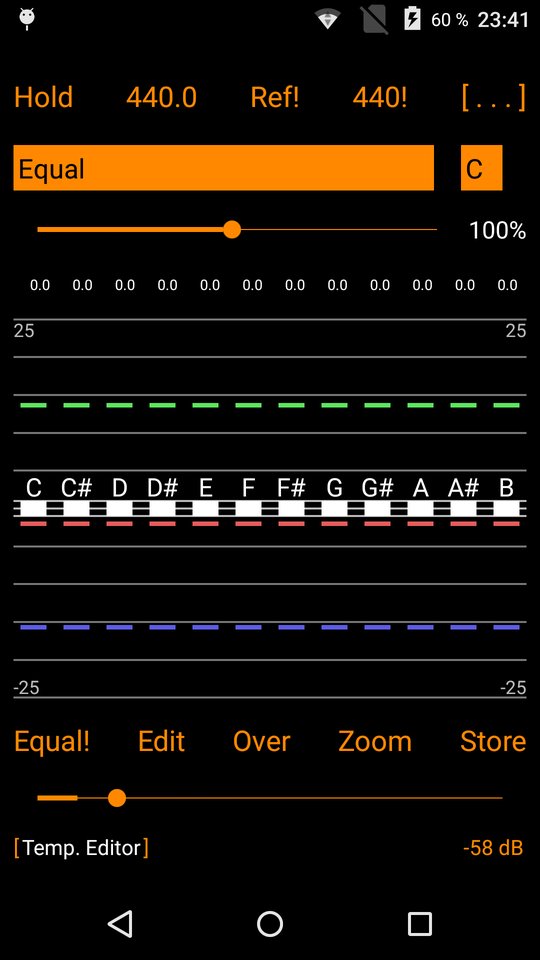 ,
,